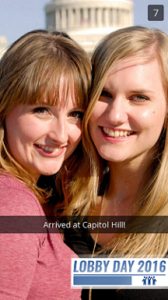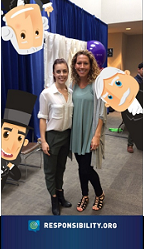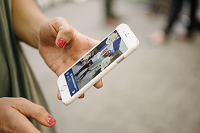If you don’t understand the mass appeal of Snapchat, you are not alone. It may be easy to dismiss the image and video messaging mobile app as a millennial fad, but with 100 million daily users it’s definitely reaching a large audience. Snapchat has recently worked to rehab its more frivolous reputation and has seen brands such as CNN, National Geographic, and the Wall Street Journal establishing presences on the platform. Advertisers have also taken notice of the larg e and active user base, having spent millions of dollars on the platform in 2015.
e and active user base, having spent millions of dollars on the platform in 2015.
Anytime a critical mass of eyeballs becomes focused on an emerging platform, it makes sense to explore how it can be leveraged to spread messages and encourage advocacy. Savvy groups are already taking advantage of Snapchat to provide immediate, disposable, behind-the-scenes, and exclusive content to their followers and give them snap-friendly assets to use to help amplify the organization’s message on the platform.
One big thing to get used to is that Snapchat is a very much “in the moment” sort of platform. Unlike Facebook or Twitter, Snapchat content comes and goes and is gone after 24 hours. There will be no organizational timeline of past posts for people to sort through, so it’s not the place to build an archived narrative, but rather one to share brief teachable moments.
It’s going to take some time before we figure out if Snapchat will evolve into a prime communication channel like Facebook, Twitter or LinkedIn. The verdict is still out on whether it’s going to be a major factor in the 2016 election, but it definitely is a platform that savvy political and advocacy communicators will need to continue experimenting with to see what works in terms of driving actions and shaping issue environments.
Here at Beekeeper Group we’ve rounded up few of our favorite tips for using Snapchat for advocacy and public affairs campaigns:
 Custom Filters for Lobby Days or Other Events: When your organization brings hundreds of people to an advocacy day on Capitol Hill, you obviously want to be able to maximize their efforts and spread the word about the work they are doing. By tapping into the social networks of your participants, you’ll be able to expand your reach from the hundreds that participate in person to thousands (if not tens of thousands) of people online. One idea we love is creating a custom geo-filter that incorporates branding and messaging with fun visuals that can be overlaid on top of participant’s snaps. A few examples we love are shown below:
Custom Filters for Lobby Days or Other Events: When your organization brings hundreds of people to an advocacy day on Capitol Hill, you obviously want to be able to maximize their efforts and spread the word about the work they are doing. By tapping into the social networks of your participants, you’ll be able to expand your reach from the hundreds that participate in person to thousands (if not tens of thousands) of people online. One idea we love is creating a custom geo-filter that incorporates branding and messaging with fun visuals that can be overlaid on top of participant’s snaps. A few examples we love are shown below:
Provide Behind the Scenes “Insider” Access: Those of us who work in Washington often take for granted the “sausage making” work of legislation, policy, and politics. However, for the members of our associations and organizations who are outside of DC, this level of access can often be enthralling. It can be as simple as doing a quick video before going into a Senator’s office or some scenes from an internal policy meeting. This tactic was used a lot during the 2016 presidential primaries by a number of campaigns, and it’s easily replicable by other groups and organizations.
 Building Your Own Snapchat Audience: You may not be ready to incorporate Snapchat into your communications mix, but it could be something worth considering if your target audience skews younger. Because the content doesn’t live forever, it’s much more “off the cuff” and unpolished. It’s easy to generate a ghost-themed snapcode that any user can scan to quickly follow your account. You can then post snaps – which are photos or short videos – to your organization’s story. The story feed is a great place to post a series of snaps related to a particular event as they only visible for 24 hours. And just like Twitter and Facebook, look for others that can amplify your message off of Snapchat. You’d be surprised how many reporters are on Snapchat.
Building Your Own Snapchat Audience: You may not be ready to incorporate Snapchat into your communications mix, but it could be something worth considering if your target audience skews younger. Because the content doesn’t live forever, it’s much more “off the cuff” and unpolished. It’s easy to generate a ghost-themed snapcode that any user can scan to quickly follow your account. You can then post snaps – which are photos or short videos – to your organization’s story. The story feed is a great place to post a series of snaps related to a particular event as they only visible for 24 hours. And just like Twitter and Facebook, look for others that can amplify your message off of Snapchat. You’d be surprised how many reporters are on Snapchat.
We’d love to know how you’re using your snaps for your efforts, let us know at info@www.beekeepergroup.com.
Note: Just because Snapchat doesn’t save the content after 24 hours, doesn’t mean someone else hasn’t saved it. There are ways to capture photos and videos shared via other tools…so like any form of communication, if you’d be embarrassed to see on the front page of the Washington Post, don’t send it. 🙂
